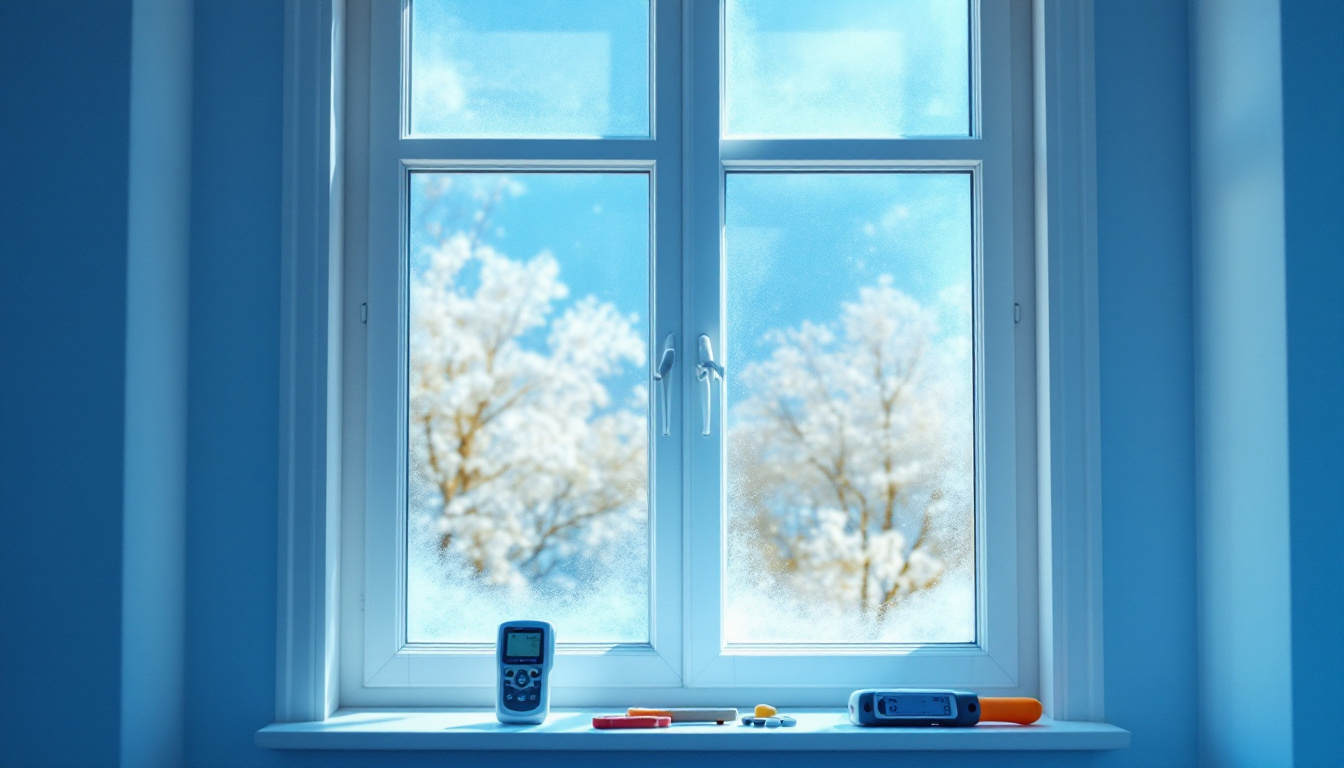Understanding the cost of double hung window installation is essential for homeowners planning to upgrade their windows. Double hung windows remain one of the most popular window styles in North America, offering excellent ventilation, classic aesthetics, and easy maintenance. This comprehensive guide breaks down all the factors that influence installation costs, helping you budget effectively for your window replacement project.
Average Double Hung Window Installation Costs
The cost of installing double hung windows varies significantly based on several factors including window quality, size, materials, and labor rates in your area. Understanding these price ranges can help you set realistic expectations for your project budget.
National Cost Averages
On a national level, homeowners can expect to pay between $300 and $850 per window for standard double hung window installation. This price typically includes the window unit itself and basic installation labor. For a whole home with 10 windows, total costs generally range from $3,000 to $8,500.
Premium or custom double hung windows can push costs higher, with high-end installations potentially reaching $1,000 to $1,500 per window. These premium options often feature enhanced energy efficiency, superior materials, and extended warranties.
Cost Breakdown: Materials vs. Labor
Understanding how costs are distributed between materials and labor can help you evaluate quotes more effectively:
- Window Unit Cost: 60-70% of total price ($180-$600 per window)
- Installation Labor: 30-40% of total price ($120-$340 per window)
- Additional Materials: 5-10% of total price (insulation, flashing, sealants)
Labor costs tend to be higher in urban areas and regions with higher costs of living. Additionally, complex installations or difficult-to-access windows may incur premium labor charges.
Factors That Influence Double Hung Window Installation Costs
Several key factors can significantly impact the final price of your double hung window installation. Being aware of these variables helps you make informed decisions and potentially identify areas where you can manage costs more effectively.
Window Material Options
The frame material is one of the most significant cost factors for double hung windows. Each material offers different benefits in terms of durability, maintenance requirements, and energy efficiency:
- Vinyl: $250-$600 per window (most affordable option with good insulation properties)
- Fiberglass: $500-$1,000 per window (extremely durable with excellent insulation)
- Wood: $600-$1,200 per window (classic appearance but requires more maintenance)
- Aluminum: $400-$650 per window (lightweight and strong but less energy efficient)
- Composite: $450-$850 per window (combines wood appearance with lower maintenance)
While vinyl offers the most budget-friendly option, materials like fiberglass and composite provide better long-term value through enhanced durability and energy efficiency.
Window Size and Customization
Standard-sized double hung windows are significantly more affordable than custom sizes. Most manufacturers produce windows in common dimensions, typically ranging from 24″ to 48″ wide and 36″ to 72″ tall.
Custom sizing can increase costs by 25-50% compared to standard sizes. Additionally, special features like custom grille patterns, specialized glass treatments, or non-rectangular shapes can further increase the price.
Glass Package Options
The type of glass used in your double hung windows significantly impacts both cost and energy performance:
- Double-pane glass: Standard option, adds $0-$100 to base price
- Triple-pane glass: Premium insulation, adds $100-$300 to base price
- Low-E coatings: Reflects heat while allowing light, adds $30-$50 per window
- Argon/Krypton gas fills: Enhanced insulation, adds $30-$100 per window
- Impact-resistant glass: For storm protection, adds $200-$400 per window
While upgraded glass packages increase upfront costs, they can deliver significant energy savings over time, especially in regions with extreme temperatures.
Installation Considerations That Affect Cost
The installation process itself contains several variables that can impact your final project cost. Understanding these factors helps you anticipate potential additional expenses and plan accordingly.
New Construction vs. Replacement Installation
There are two primary installation methods for double hung windows, each with different cost implications:
Full-frame installation (new construction style) involves removing the entire existing window frame and installing a completely new window unit. This method costs 10-15% more but provides the opportunity to address any structural issues or water damage around the window opening.
Insert installation (replacement style) keeps the existing frame intact and installs the new window within it. This method is less expensive and less disruptive but may not be suitable if the existing frame has damage or if you want to change the window size.
Structural Modifications and Repairs
Unexpected issues discovered during installation can significantly impact costs. Common problems include:
- Rotted wood or water damage: $100-$300 per window to repair
- Structural reinforcement: $200-$500 if load-bearing elements need modification
- Resizing window openings: $500-$1,000+ for significant changes to opening dimensions
- Mold remediation: $300-$1,000 depending on severity
Having a contingency budget of 10-15% can help cover these unexpected expenses if they arise during your project.
Accessibility and Installation Complexity
The location and accessibility of your windows can significantly impact installation costs. Windows on upper floors, especially those requiring scaffolding or special equipment to access, may incur additional charges of $50-$150 per window.
Similarly, windows in difficult-to-reach areas or with unusual configurations may require more labor time, increasing costs by 10-25% compared to standard installations.
Energy Efficiency and Long-Term Savings
While energy-efficient double hung windows may have higher upfront costs, they can deliver substantial long-term savings. Understanding these benefits helps justify the initial investment in quality windows.
Understanding Window Energy Ratings
Energy-efficient double hung windows are rated using several key metrics that indicate their performance:
- U-Factor: Measures heat transfer (lower is better, look for 0.30 or less)
- Solar Heat Gain Coefficient (SHGC): Measures solar radiation admitted (lower is better in hot climates)
- Air Leakage: Measures air infiltration (lower is better, look for 0.3 or less)
- Visible Transmittance: Measures light passage (higher means more natural light)
ENERGY STAR certified double hung windows typically cost 10-15% more than standard models but can reduce energy bills by 12% on average nationwide.
Available Rebates and Incentives
Various programs can help offset the cost of energy-efficient double hung windows:
Federal tax credits currently offer up to 30% of the cost (maximum $600 for windows) for ENERGY STAR certified windows. Many utility companies also provide rebates ranging from $25 to $100 per window for energy-efficient models.
State and local incentives vary widely but can provide additional savings. Some municipalities offer property tax reductions for energy-efficient home improvements, including window replacements.
Choosing the Right Installation Provider
The company you select to install your double hung windows can significantly impact both cost and quality. Making an informed choice helps ensure you receive good value and professional results.
Comparing Quotes and Services
When evaluating window installation quotes, look beyond the bottom-line price to understand what’s included:
- Detailed scope of work: Ensure all aspects of installation are clearly defined
- Quality of materials: Verify the specific window models and components included
- Warranty coverage: Compare both manufacturer and labor warranties
- Timeline: Understand the projected schedule and potential delays
- Payment terms: Review deposit requirements and payment schedule
Obtaining 3-5 quotes provides a better understanding of fair market pricing in your area and helps identify outliers that may indicate potential issues.
Professional vs. DIY Installation
While DIY installation may seem like a cost-saving measure, it comes with significant risks for double hung windows. Professional installation typically accounts for 30-40% of the total project cost but provides several important benefits:
Professional installers ensure proper sealing and insulation around the window, which is critical for energy efficiency and preventing water infiltration. They also have the tools and expertise to handle unexpected issues that may arise during installation.
Most importantly, manufacturer warranties often require professional installation to remain valid. DIY installation can void these warranties, potentially costing more in the long run if problems develop.
Planning Your Double Hung Window Installation Budget
Creating a realistic budget for your double hung window installation project helps ensure you can complete the work without financial strain while getting the quality you desire.
Sample Budget Scenarios
Consider these typical scenarios to help frame your own budget planning:
Economy Package: Vinyl double hung windows with standard glass and basic features
- Window cost: $250-$400 each
- Installation: $150-$250 per window
- Total per window: $400-$650
- 10-window home total: $4,000-$6,500
Mid-Range Package: Fiberglass or composite windows with enhanced energy features
- Window cost: $450-$700 each
- Installation: $200-$300 per window
- Total per window: $650-$1,000
- 10-window home total: $6,500-$10,000
Premium Package: Wood windows with top-tier energy features and custom options
- Window cost: $700-$1,000+ each
- Installation: $250-$350 per window
- Total per window: $950-$1,350+
- 10-window home total: $9,500-$13,500+
Financing Options for Window Installation
Several financing approaches can help manage the upfront cost of double hung window installation:
Many window companies offer financing programs with promotional terms like 0% interest for 12-24 months. Home equity loans or lines of credit typically provide lower interest rates for larger projects, while personal loans offer quick approval but usually at higher interest rates.
Some utility companies provide on-bill financing for energy-efficient upgrades, allowing you to pay for windows through your monthly utility bill based on projected energy savings.
Whatever your budget allows, investing in quality double hung windows installed by professionals typically delivers the best long-term value through energy savings, comfort improvements, and enhanced home value.





